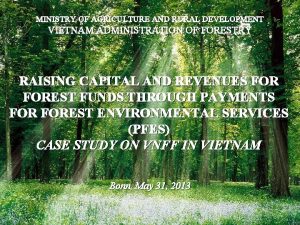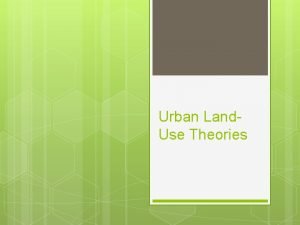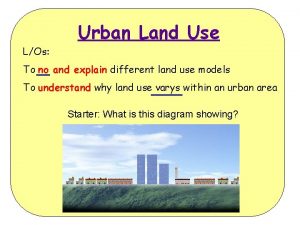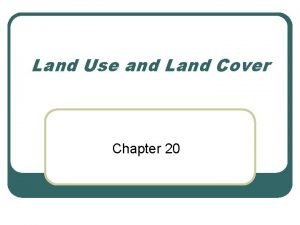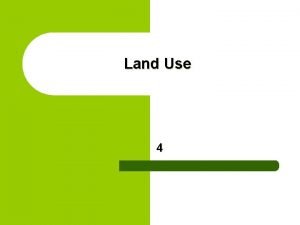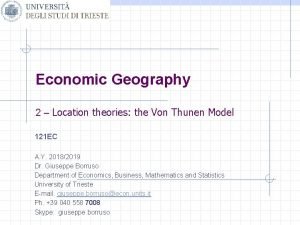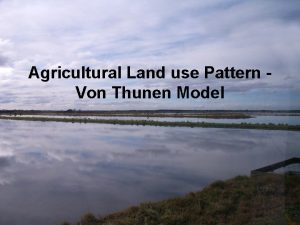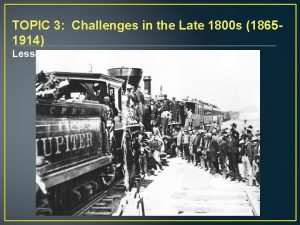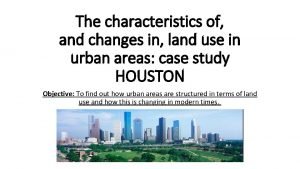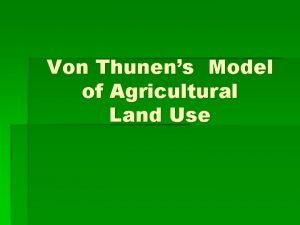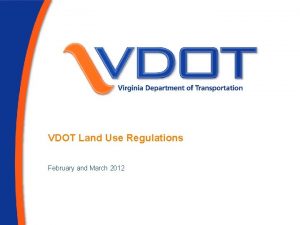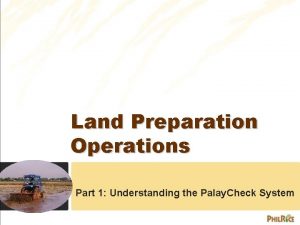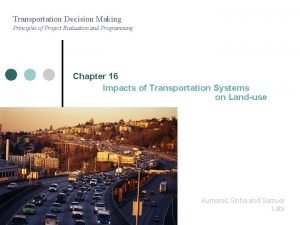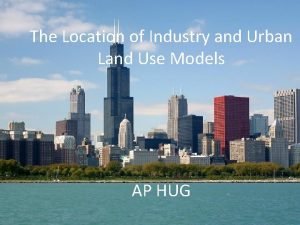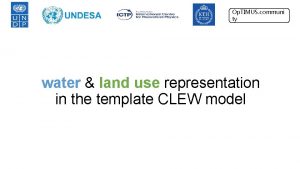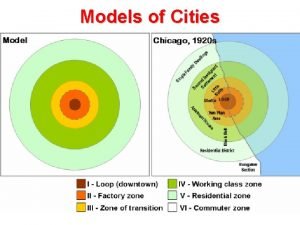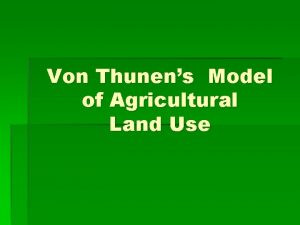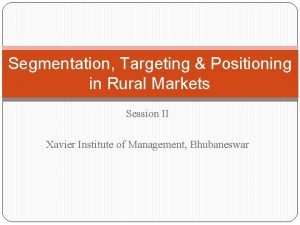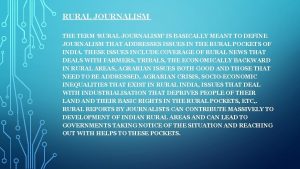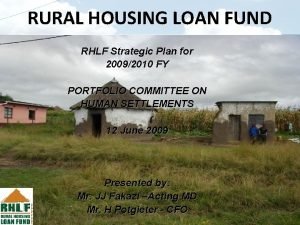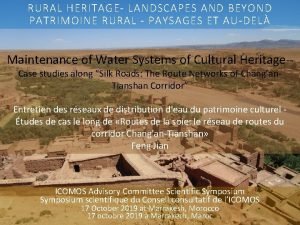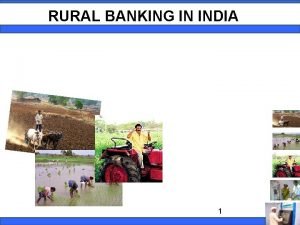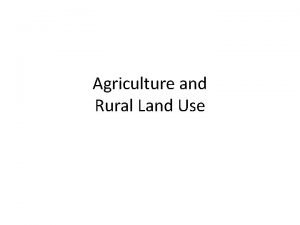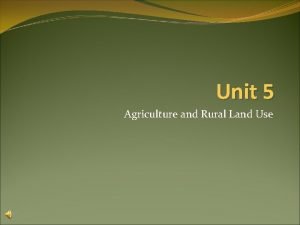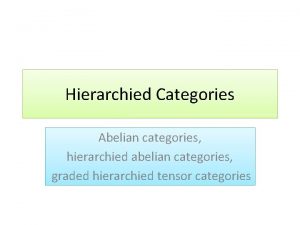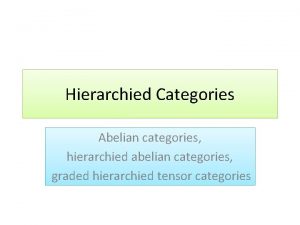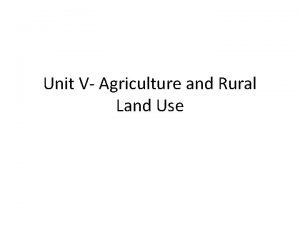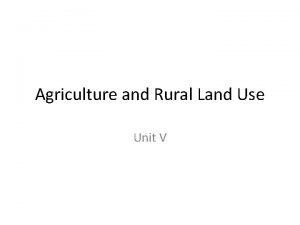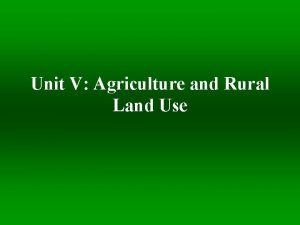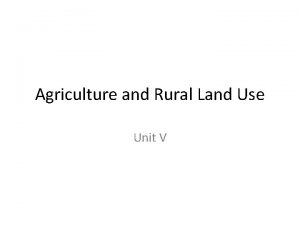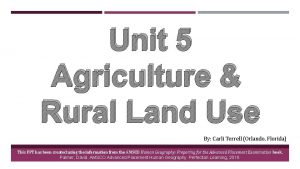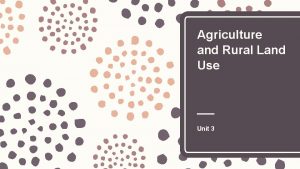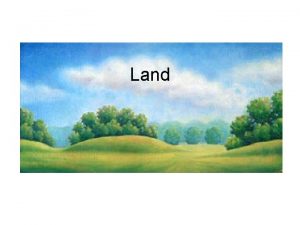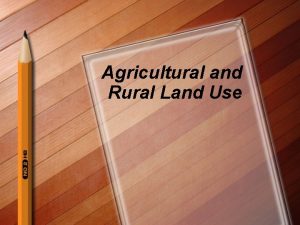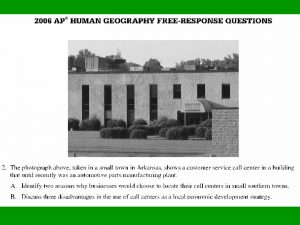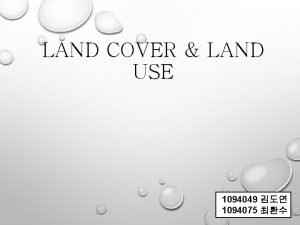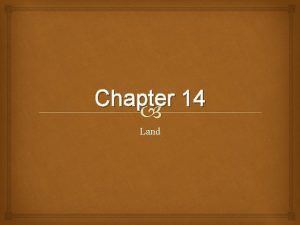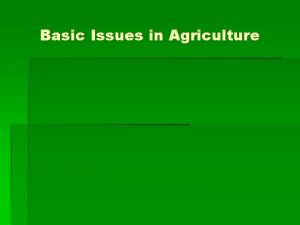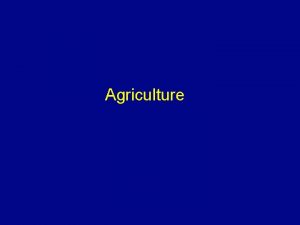UNIT V Agriculture Rural Land Use A Categories






































- Slides: 38

UNIT V: Agriculture & Rural Land Use

A. Categories of Economic Activity 4. “White-collar” information services 5. High-level decision making 3. “Service-sector” industries 2. “Value added” industries 1. Harvest or extraction

I. Primary Activities: I. Subsistence Agriculture: for survival II. Commercial Agriculture: for profit III. Resource Exploitation: fishing, forestry, mining, hunting

CORN POTATO RICE MILLET WHEAT

LDCs: more workers in ag. MDCs: less workers in ag.

1. intensive farming: farming high yield per area of land - chemical farming (fertilizers, pesticides) - irrigation - genetically modified crops (GMO’s) - RICE: feeds ½ world 2. extensive agriculture: agriculture low yield per area - low pop. density Ex: cattle ranching, wheat

Shifting cultivation (swidden agriculture): – – “slash-and-burn” cutting, burning, planting mutlicropping Amazon, Congo, Indonesia

Bananas Labor intensive Intensive land use Commercial Ag.

Pigs Feed Lots & Poultry Production Labor intensive & capital intensive Intensive land use Commercial Ag.

The Green Revolution (1940’s-1980’s): research & technology in plant genetics to create new higher-yielding grains - successful ag. experiments in developing countries (India, Mexico, China, Phillipines) Phillipines Intensive farming practices: mechanization, chemicals, biotechnology

Regions benefitting form Green Revolution

1. biodiversity loss 2. soil erosion; fertility loss; salinization 3. air pollution Negatives of Green Revolution 4. water depletion; pollution 5. human health concerns


Boserup’s Thesis Pop. ↑ = requires ↑ tech. = ↑ food = Pop. ↑

Carl Sauer • Proposed that agriculture began in Bay of Bengal 14, 000 years ago… – Root cultivation 1 st

World Areas of Agricultural Innovations Carl Sauer identified 11 areas where agricultural innovations occurred.

agribusiness: an industrialized, corporate form of ag. - mostly in core & developing countries


The Meatrix

“Organic Agriculture” production w/out chemicals, hormones, antibiotics - sales on ↑ in MDC’s - NO “franken foods” (GMO’s)

Organic Agriculture


Model of Agricultural Location: “von Thünen’s Rings”: 1. concentric rings around cities 2. As distance from market ↑, land value ↓ 3. perishable crops close to city 4. extensive crops (grain & livestock) far


von Thunnen weaknesses: • high-speed transport today • “truck farms” (refrigerated ships, trucks) • outsourcing of jobs

Advances in Transportation & Food Storage -- refrigerated containers Dunedin, New Zealand


II. Secondary Economic Activities: manufacturing, processing, building

III. Tertiary Economic Activities - service jobs (retail, restaurants, tourism) - 80% of U. S. jobs

IV. Quaternary Economic Activities - high-skilled research; management

V. Quinary Economic Activities - executive decision makers - “gold” collar jobs

Land Divisions 1. Township & Range System Range: – evenly disperses farmland – sq. miles Township: political center

Township and Range: The cultural landscape of Garden City, Iowa reflects the Township and Range system. Townships are 6 x 6 miles and section lines are every 1 mile.

2. Metes & Bounds Survey • natural features used – rivers, lakes, mts. – British influence

3. Long-Lot System – from road, river – French influence

Dominant Land Survey Patterns in the US

“Tragedy of the Commons” - resource depletion “Ruin is the destination toward which all men rush”

1. There are two main differences in agricultural production: commercial agriculture as practiced mostly by core countries and subsistence agriculture as practiced mostly in periphery countries. (A) Briefly explain how each factor below influences BOTH commercial and subsistence agricultural production: – – – Purpose of farming Percent of labor force in farming Use of machinery Size of farm Integration of farming with other economic activities (B) Describe THREE factors which prevent periphery countries from transitioning from subsistence to commercial agriculture.
 Ministry of agriculture and rural development cameroon
Ministry of agriculture and rural development cameroon Ecotourim
Ecotourim An area of land largely enclosed by higher land
An area of land largely enclosed by higher land High rocky land usually with steep sides
High rocky land usually with steep sides Unit 6 review questions
Unit 6 review questions Rodhocetus
Rodhocetus Burgess model of land use
Burgess model of land use Types of land use models
Types of land use models Land use and growth management
Land use and growth management Land use planning '' lecture notes
Land use planning '' lecture notes Hmda land use certificate
Hmda land use certificate Usgs land use classification
Usgs land use classification Types of land use
Types of land use Mixed land use ap human geography definition
Mixed land use ap human geography definition Rent theory
Rent theory Irrevocable rights to some limited use of another's land
Irrevocable rights to some limited use of another's land Von thunen's agricultural land use model
Von thunen's agricultural land use model Which use of western land negatively affected everyone?
Which use of western land negatively affected everyone? Characteristics of land use in urban areas
Characteristics of land use in urban areas Land use planning '' lecture notes
Land use planning '' lecture notes Flood hazard area land use management guidelines
Flood hazard area land use management guidelines Von thunen's model
Von thunen's model Vdot ssar
Vdot ssar Land use planning lecture notes
Land use planning lecture notes Dryland preparation
Dryland preparation Transportation
Transportation Multiple nuclei model
Multiple nuclei model What is the meaning of land use
What is the meaning of land use Cocentric zone model
Cocentric zone model Define land use planning
Define land use planning Peripheral model ap human geography
Peripheral model ap human geography Von thunen 6 assumptions
Von thunen 6 assumptions Yesterday
Yesterday Sig rural
Sig rural Rural market segmentation
Rural market segmentation Importance of rural journalism
Importance of rural journalism Rural housing loan fund
Rural housing loan fund Rural heritage
Rural heritage Function of rrb
Function of rrb

